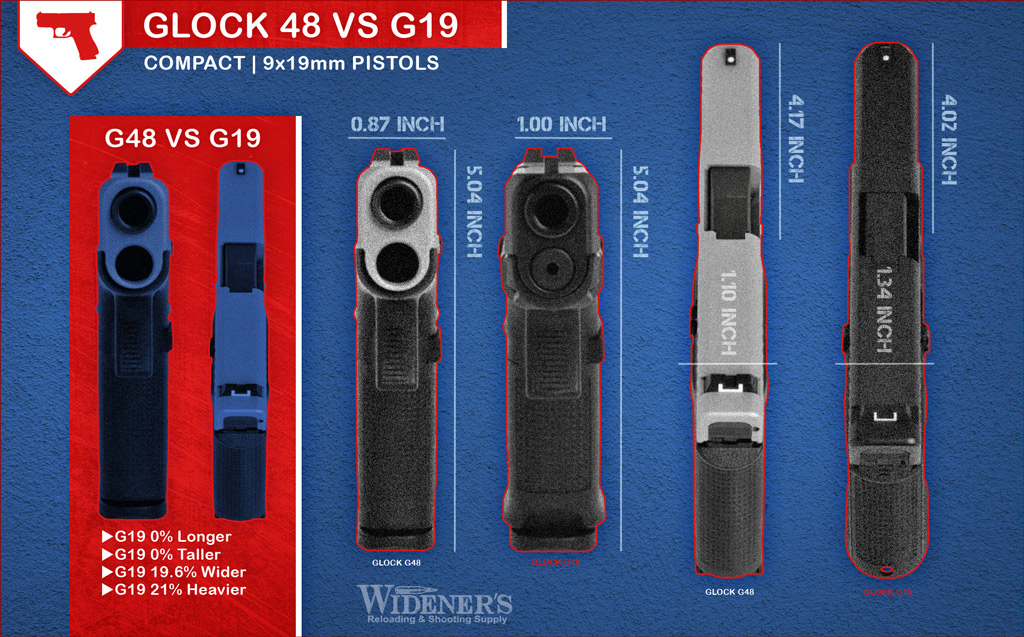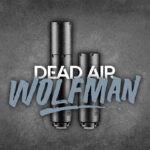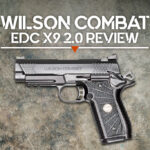
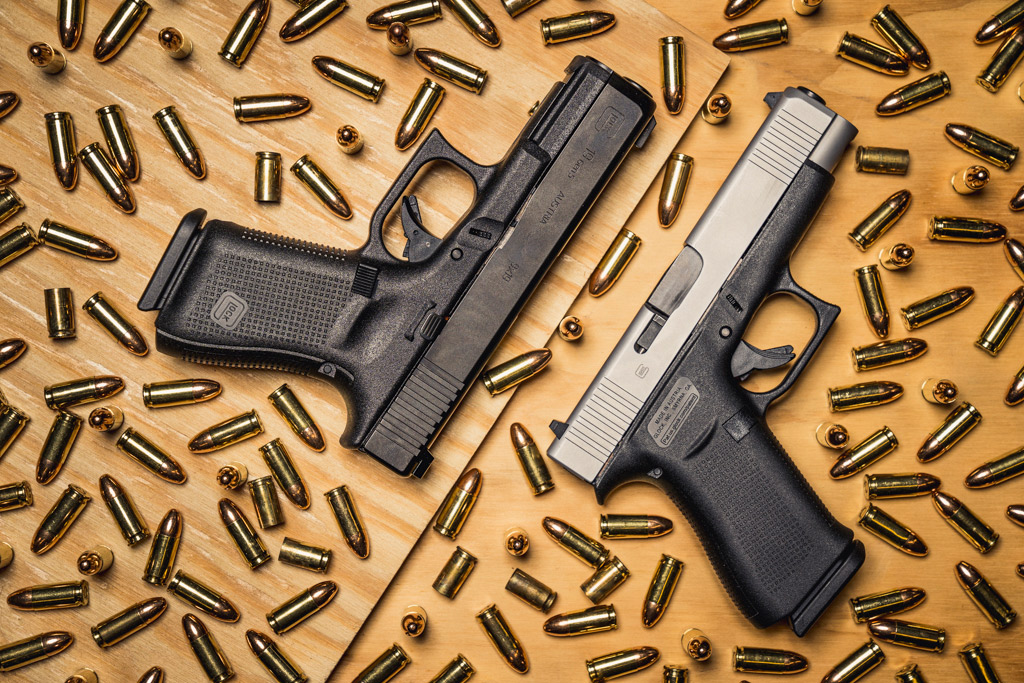
Author: Jacob Long
For many years, the Glock 19 has been the go-to recommendation for those looking for a compact-sized concealed carry pistol. Its size, functional design and capacity make it an obvious choice. It’s a great gun for beginners or expert marksmen and has compatibility with a wide range of marketplace accessories. Improvements have been made over the years, but the G19 today remains a testament to Glock’s pursuit of perfection.
The announcement of Glock’s slimline series raised eyebrows, some Glock enthusiasts interpreted it as a step sideways instead of a step forward. History shows public opinion can change as quickly as a manufacturer can update its product line. Many asked if Glock could make a single stack pistol excellent enough to rival the pedigree of the G19. With the announcement of the G43X and G48, Glock presented the market with matured single stack design options, ready to answer those questions.
So what are the compromises to a slimline design like the G48, versus the proven function of the G19? For a better understanding of the capabilities of these two guns, we will take a look at the core characteristics they share. How do these two compact Glocks stack up against each other? Let’s jump in and take a look.
Glock 48 VS 19: Side By Side Comparison
Comparisons between the Glock 48 and G19 come down to two key decision points for potential owners. Do you value capacity or concealability?
For subcompact Glock owners, the decision is obvious, size matters for concealment. Glock obviously had this in mind when they designed the single stack line, and have continued to improve on the idea with the G43X and G48 models. For compact Glock owners, the decision is harder, as the G48 blurs the lines with its slimline design and increased single stack 10+1 capacity.
Glock 48 and Glock 19 Specs
| Glock 48 | Specs | Glock 19 (Gen 5) | Specs |
| Caliber | 9x19mm | Caliber | 9x19mm |
| Barrel Length | 4.17″ | Barrel Length | 4.02″ |
| Overall Length | 7.28″ | Overall Length | 7.28″ |
| Slide Length | 6.85″ | Slide Length | 6.85″ |
| Width Overall | 1.10″ | Width Overall | 1.34″ |
| Height W/ Mag | 5.04″ | Height W/ Mag | 5.04″ |
| Avg Weight Loaded | 25.21 oz / 1.57 lbs | Avg Weight Loaded | 31.04 oz / 1.94 lbs |
| Avg Trigger Pull | 5.5 lbs | Avg Trigger Pull | 5.5 lbs |
| Capacity | 10+1 | Capacity | 15+1 |
| Sights | White Dot/GNS/Ameriglo | Sights | White Dot/GNS |
| Finish | Silver nPVD | Finish | Black nDLC |
| MSRP | $538 | MSRP | $599 |
The Glock 48 feels like a skinny G19 in the hand, the difference in trigger distance is the only feature that’s immediately noticeable. The dimensions and sight radius of the guns are similar. I had no issues picking up the G48 and running it exactly the way I’ve been shooting the G19 models for years.
The single stack Glock 48 loses a point to the G19 due to its lack of an accessory rail. Despite its extra weight, the G19 makes a better option for a home defense weapon, being able to add a wide variety of rail-mounted accessories is a plus.
The G19 also has a variety of cut slide options on the market for mounting popular optics like the Trijicon RMR, or the Vortex Venom. Time will tell if the popularity of the slimline Glock series brings the same features and availability of marketplace accessories to the single stack lineup.
G48 VS G19 Weight Comparison
The Glock 19 is 21% heavier (G19 31.04 oz / 1.94 lbs vs. G48 25.21 oz / 1.57 lbs) than the single stack G48 when loaded. Part of this extra weight is the additional ammo capacity of the G19. When both guns are weighed with empty magazines, the G19 weighs only 3.25 oz more than the G48. Both guns feel well-balanced in the hand. The compact size eliminates the front and top-heaviness of the sub-compact size models. The G48 has a slight edge in weight management over the G19, but it comes at the cost of decreased ammo capacity.
Pistol Barrels Compared
The Glock G48 features a 4.17″ Glock Marksman Barrel (GMB) standard from the factory. In comparison, the Gen 5 G19 features a 4.02″ Glock Marksman Barrel (GMB) which Glock claims to have improved the rifling on and modified the barrel crown for increased precision.
The G19 barrel walls are thicker (2.5mm) than the G48 barrel walls (1.8mm). The rifling and crown work on both barrels appears to be very similar, the ramp on the rear of the G19 barrel is more defined than the G48. In hand, the G19 barrel feels heavier than the G48. Both pistols are very accurate for their size, I’m giving the advantage to the G19 barrel for construction, material strength, and attention to detail in the finishing.
Pistol Widths Compared
The overall width of the G19 is slightly wider than the G48 (G19 1.34″ vs. G48 1.10″). Visually, the G19 doesn’t look that much thicker when holding the pistols side-by-side. The G48 features a beavertail on the rear of the frame, while the G19 has an optional one built into an accessory backstrap. The G19 has a wider grip, ambidextrous slide stop and flared mag well, giving you increased stability in the hand. The mag release on both pistols is stiff and very close to the frame, I found myself having to push it more than once on several occasions to drop a magazine. If size matters, the G48 has a slight edge, if you prefer in-hand stability, the G19 comes out on top. Let’s call this one a draw.
Glock 48 and G19 Ergonomics Compared
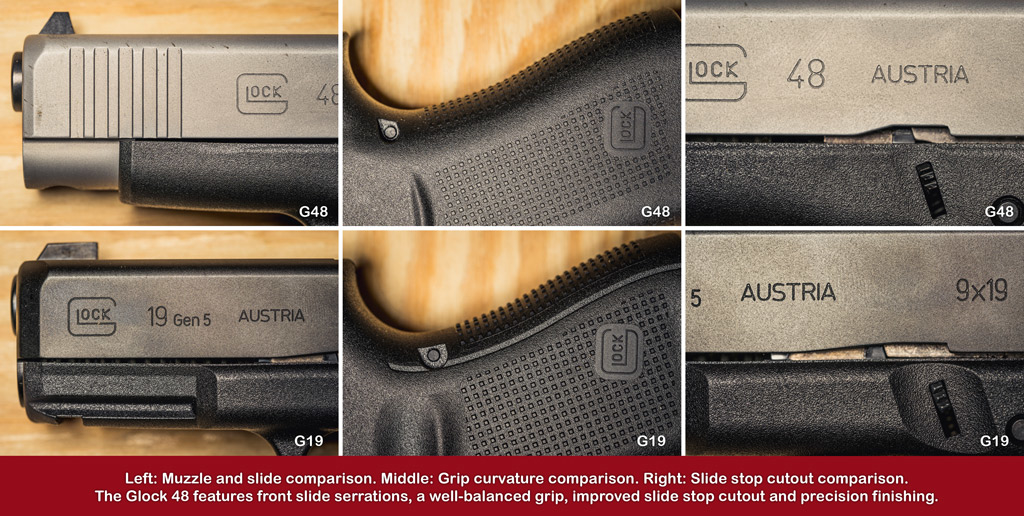
The ergonomics of both pistols are excellent, the G19 has a slight advantage from its evolution of design.
The grip of the Gen 5 G19 fills the hand nicely. Its size, texture, and shape inspire feelings of confidence at the range. The evolution of improvements to the G19 grip are noticeable. It feels like a more mature product than the G48.
While it’s easy to get a good purchase on the elongated grip of the G48, the grip texture is less aggressive. The slim width of the G48 grip caused me to have to squeeze the pistol more tightly between my palms to feel confident in my purchase when firing it.
Drawing From a Holster
When drawing from a Kydex holster in the appendix position, I found both guns easy to grip, draw and reholster. I noticed the difference in trigger width and distance more when drawing the guns from a holster. When drawing the G19, my index finger fell over the trigger easily from the front of the trigger guard. When drawing the G48, I had to move my finger from the trigger guard to the trigger, then slightly reposition my finger towards the middle of the trigger before I felt confident to fire.
After sending 100 rounds downrange with both pistols, I found the G19 to be more comfortable to hold and fire. But I didn’t find that the ergonomics of either pistol improved my accuracy. I shot two, 10-round cycles at a 10″ target at 25 yards and ended up with the same results (G19 @25 Yards: 6/10, 7/10), G48 @25 Yards: (6/10, 7/10). Glock’s minimalist approach to design may not be for everyone, but they’ve got the science of handgun ergonomics figured out. The ergonomic advantage goes to the Glock 19, but for a first-generation model, the G48 holds it’s own.
Glock 48 and G19 Factory Sights
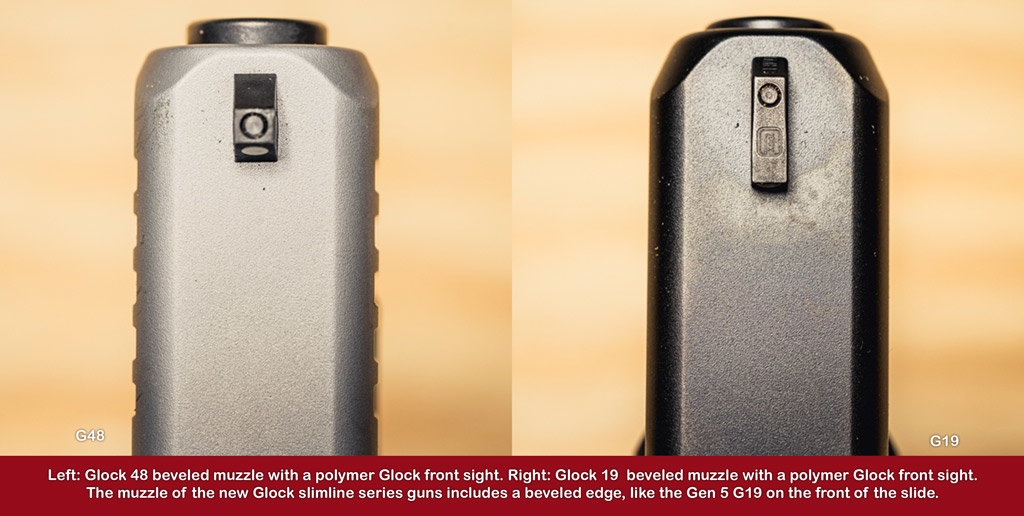
After a day of shooting at the range, both pistol finishes (silver nPVD & black nDLC) show residue and signs of use.
The Glock 48 comes with the standard polymer ‘goal post’ rear sight and ‘white dot’ front sight. The G48 has three additional sight options including standard steel, luminescent steel, Glock night sights, and Ameriglo. The Glock 19 comes with the standard polymer sights, but also has factory options for standard steel, luminescent steel, Glock night sights, and Ameriglo. Both pistols are equally matched with factory sight optics. The important thing is to find what sight option works best for you and to practice with it.
Pistol Slides Compared
The silver nPVD coated slide of the G48 features front serrations, a beveled front muzzle with rounded corners and an improved cutout for the slide stop. Depending on the ammo being fired, the silver finish may get dirty quickly around the muzzle area. Thankfully at the time of writing this, Glock has announced black nDLC versions of the G48 and G43X. The Gen 5 Glock 19 has a more rounded front muzzle bevel than the Gen 4, but it lacks the front serrations of the G48. The recoil spring of the G19 is stiffer than the G48, making you wonder why Glock didn’t include a front slide serration on the Gen 5 G19. I’m giving an advantage to the G48 in the slide category.
The Glock Factory Trigger
I’m not a huge fan of the ‘squishy’ single stack Glock trigger on the G43, G43X, and G48, it feels unfinished for a factory-certified trigger job. Once you reach it, the trigger break and return reset is clean, but the amount of slack beforehand does not inspire confidence. As noted, the single stack Glock trigger is slimmer in width than the standard Glock trigger. If you are used to the width of the trigger on the G17 or G19 it may take some time practicing with it to get used to it. Like most Glock owners, I prefer the factory trigger of the G19, I’m hopeful that Glock will improve this in future slimline models.
Ammo Capacity: Less Is More?
The 10+1 capacity of the G48 is a solid offering for a compact single stack pistol. It has more firepower by volume than any popular concealed carry revolver on the market. However, the 15+1 standard capacity of the G19 offers more defensive leverage to the average gun owner, despite its increase in weight. The G19 also has factory magazine options for 17, 24, 31, and 33 rounds. It is compatible with most double-stack Glock magazines.
The G48 currently only shares magazine compatibility with the G43X. If loaded pistol weight during concealed carry is your primary concern, the 10+1 capacity of the G48 is a good option for concealment. Otherwise, the G19 wins the capacity category hands down. Less is more until you need additional defensive firepower and the option isn’t available!
Glock 48 VS 19: Ballistics Testing
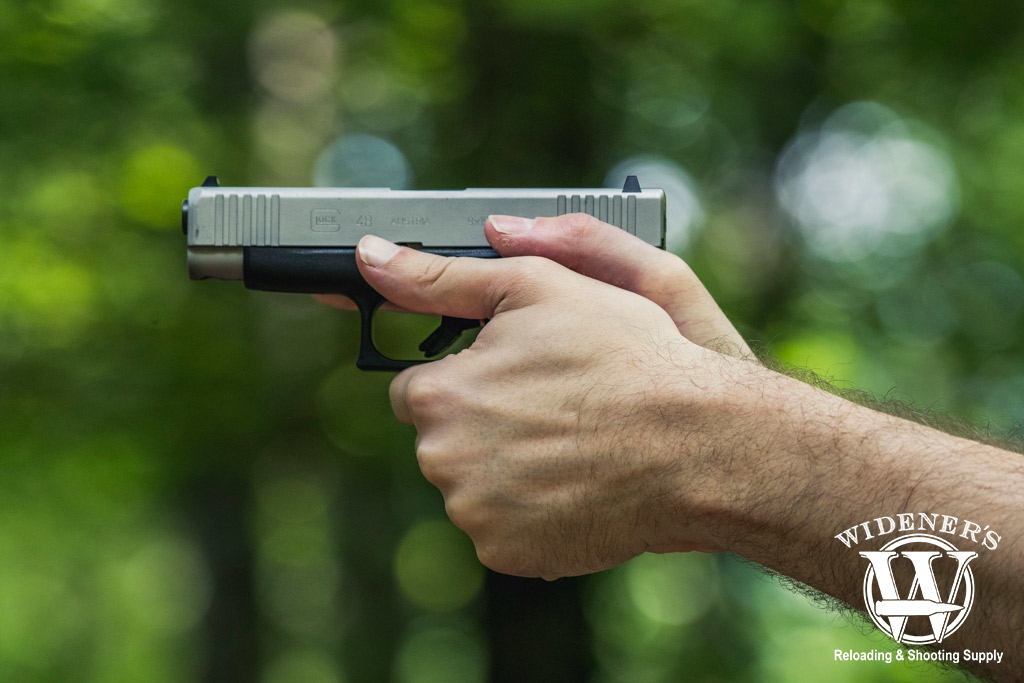
Shooting ammo designed for self-defense at the range on a chronograph is a great way to capture valuable ballistic data.
To test popular self-defense ammo loads, I set up a ballistic chronograph at the range, I shot 10 rounds of Speer Gold Dot 9mm JHP 124gr +P and 10 rounds of Federal HST 9mm JHP 147gr through both pistols. The recorded data from the chronograph was captured at a distance of about 10′ with a calibrated unit. Glock is known for its reliability and the mechanical function and accuracy was excellent with both pistols using self-defense ammo. I had no issues with feeding, firing or ejecting the rounds from either brand.
Barrel Impact on Muzzle Velocity
In the G48, the Speer Gold Dot 9mm JHP 124gr +P pushed an average velocity of 1179. The G19 finished with an average of 1181. With the heavier subsonic Federal HST 9mm JHP 147gr loaded the G48 had an average velocity of 967, while the G19 averaged out at a velocity of 964. In conclusion, based on the data, we have another draw. The G19 handles the velocity of the 124gr +P loads a little better. The longer barrel of the G48 handles the heavier 147gr ammo at a velocity a little closer to the advertised manufacturer box speed.
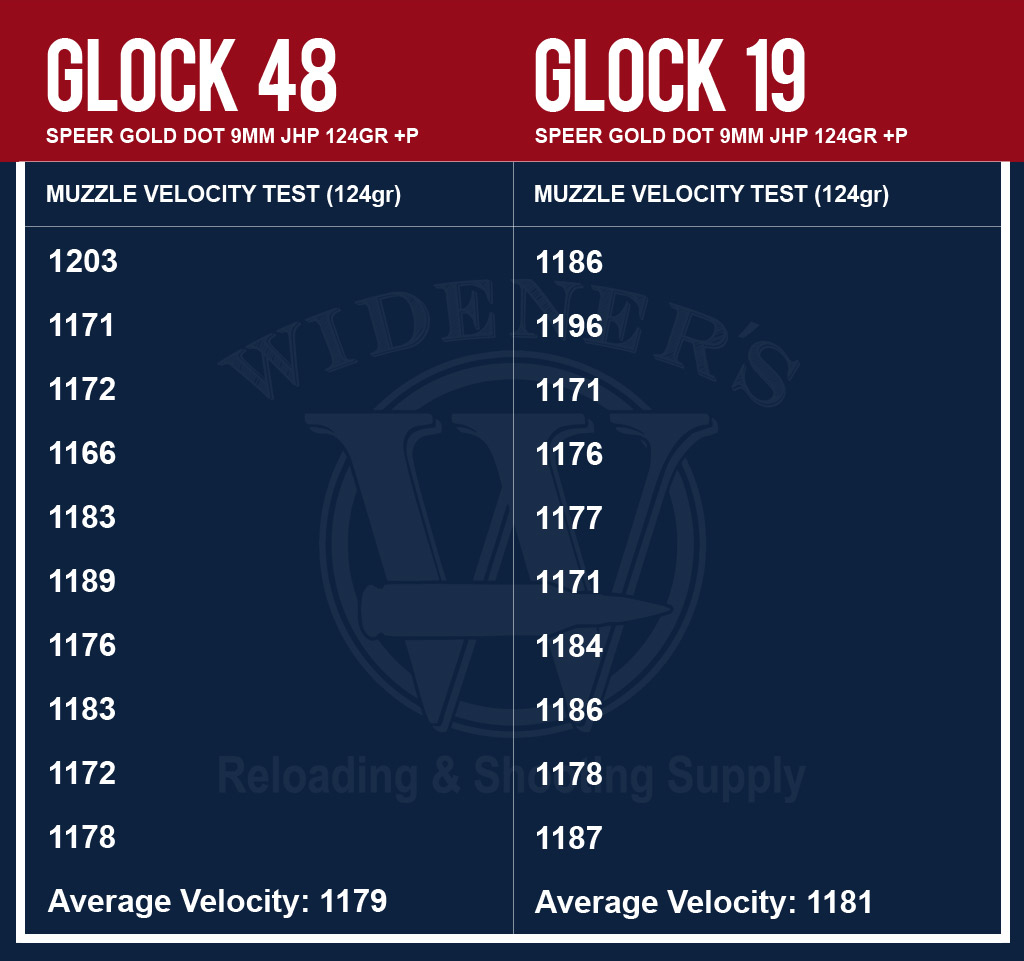
Speer Gold Dot 9mm JHP 124gr +P ammo is a consistent round with reliable results.
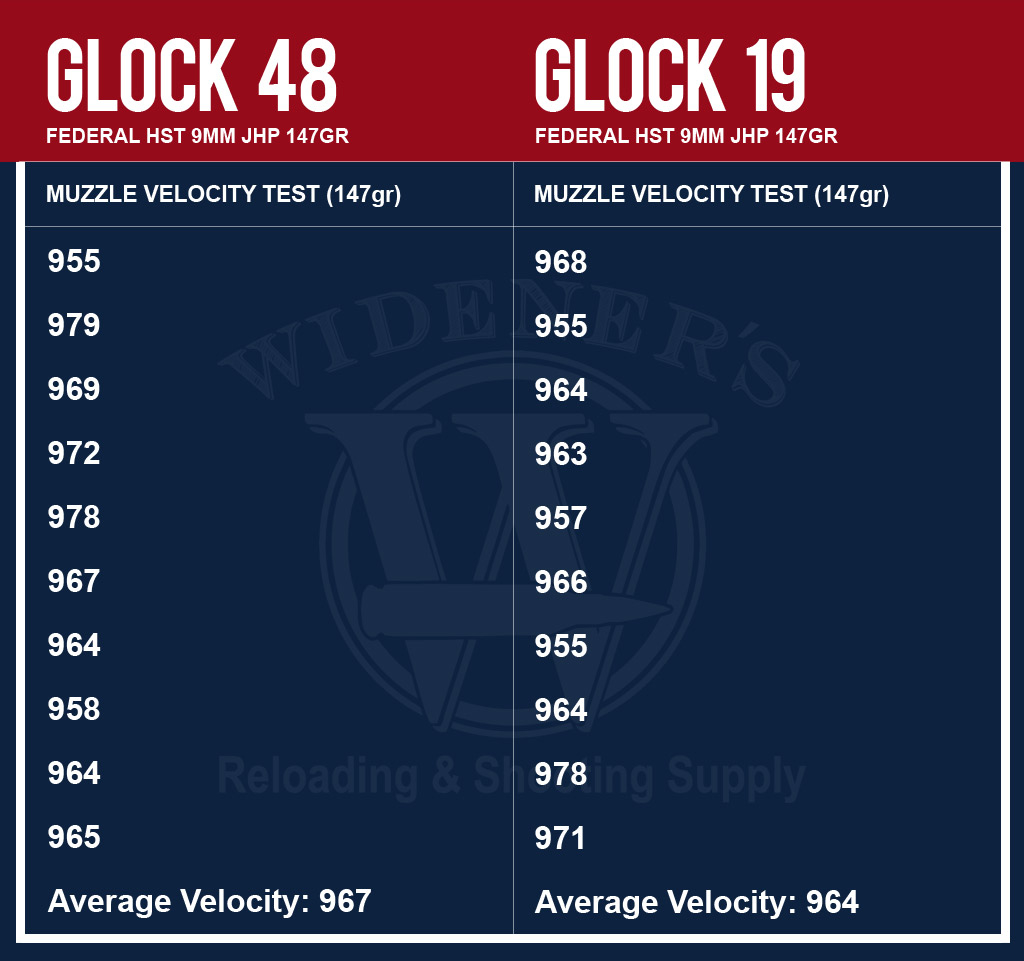
Federal HST 9mm JHP 147gr ammo is a heavier grain bullet designed for self defense.
The Followup Shot: Recoil Compared
Without a scientific way to measure recoil, I can only give you what I’ve experienced from shooting both pistols. Fiocchi 115gr FMJ is a great training round and both pistols performed admirably with it loaded. Both pistols have more “snap” with the Speer Gold Dot 9mm JHP 124gr +P loaded.
As you’d expect, I found the G48 to have more muzzle rise and felt recoil with this round. Federal HST 9mm JHP 147gr had less felt recoil once again in the G19, however, I found it to be very accurate in both pistols with followup shots. As a result, the G19 handled recoil better with the tested ammo. It had less felt recoil and less noticeable muzzle rise with followup shots, the advantage goes to the G19.
Concealed Carry Dynamics
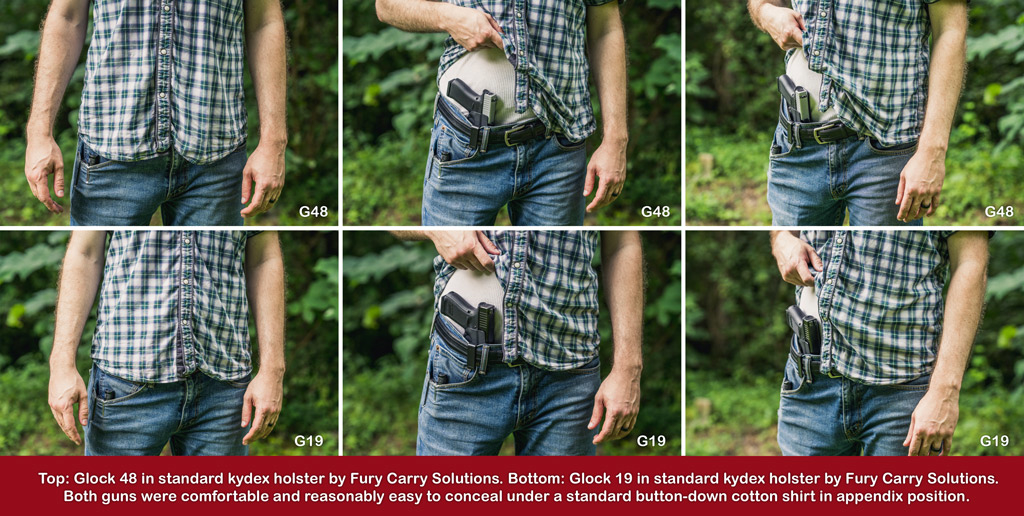
Compact sized pistols like the G48 and G19 may be harder to conceal in summer months depending on your attire.
Concealed carry should be the category where the slimline G48 pulls away from the G19, except it doesn’t. The G48 is 19.6% slimmer and 21% lighter (loaded) than the G19, so, consequently, they are very similar pistols. The weight and size difference isn’t enough to differentiate the single stack design of the G48 from the double stack of the G19. I selected the Fury Carry Solutions Kydex appendix holster for the comparison between the Glock 48 and 19. For actual concealed carry, I would change out the Fury Kydex holster plastic retention clip. Replacing it with a metal clip or a leather loop would increase retention strength in self-defense situations.
As you can see in the comparison images, both pistols were reasonably concealable under a buttondown cotton shirt with jeans. In this test scenario, the G48 size didn’t really offer any concealment advantages over the G19. Both guns were comfortable to wear, I didn’t have any issues with sitting, squatting or walking around on various terrain. However, due to their size, bending at the hip can only be done on the side opposite the pistol’s location (for me on the left). The weight of both pistols (loaded) was more than a standard department store leather belt could handle. You’ll want to make sure to wear a quality, non-flexing gun belt if you decide to conceal carry with either pistol.
Glock 48 VS 19: Which Gun Should You Buy?

The all-purpose pistol has evolved from generation to generation in the pursuit of creating the perfect concealed carry pistol.
When reviewing two such similar handguns, you must establish their intended purpose, and evaluate their ability to perform within those set guidelines. Both the G48 and 19 are compact size pistols, designed for concealed carry, and have a capacity to 10-rounds or more. Each gun achieves its intended purpose. The mechanical function between G48 and 19 is nearly identical and they strike a balance with their features, handling and price points. Performance and synergy is the tie-breaker. The question becomes not just which gun does it all, but which gun does it best.
The G48 is an excellent new addition to the marketplace, but it does not overshadow the G19. The Glock 19 has improved with each new generation with the Gen 5 being the current zenith. It isn’t that the G48 isn’t a great choice for a concealed carry pistol, it is. But it doesn’t outperform the G19 and the G19 has been at it for years longer. The slight decrease in size and weight of G48 isn’t enough to convince existing G19 owner to buy a G48 for easier concealment. On the other hand, first time Glock buyers may find the G19 more comfortable to shoot and the added capacity to be a confidence booster. With each new release Glock strives to perfect the all-purpose pistol, one day soon they may reach their goal.



